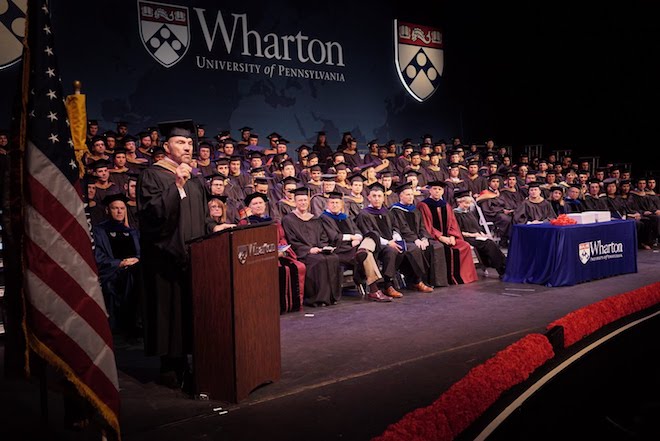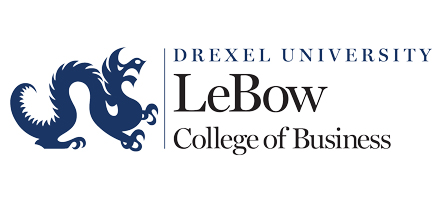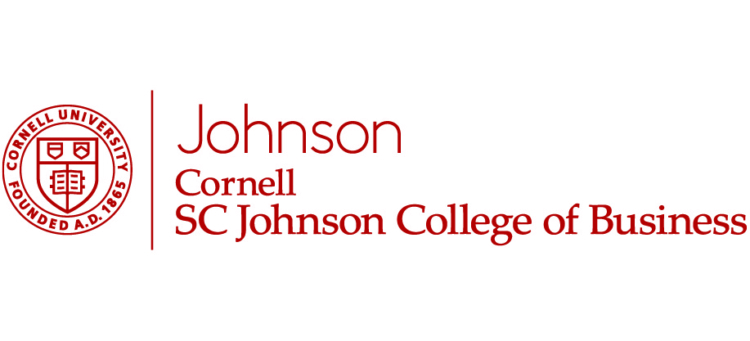
Wharton has the top EMBA program in the U.S., according to the 2017 ranking by U.S. News & World Report. Chicago Booth is No. 2, and Northwestern Kellogg No. 3. Courtesy photo
It was just two years ago that the University of Pennsylvania’s Wharton School was knocked from its long-time perch atop the U.S. News & World Report rankings for executive MBA programs. Seems like a lifetime ago: Wharton reclaimed the top spot the next year and repeated as No. 1 in the just-released 2017 rankings, with Booth landing at No. 2. Except for the oddity of 2015, then, Wharton has been first in the ranking every year since at least 2011, and Booth has been second.
U.S. News ranked 23 schools this year, and there was little movement elsewhere in the upper echelons: Northwestern University’s Kellogg School of Management came in third for the seventh straight year, and Duke University’s Fuqua School of Business repeated in fourth, where it has landed every year since 2011. New York University’s Stern School of Business has been the most active school in terms of upward movement in recent years, jumping from seventh to fifth in 2016 and moving into a tie with Duke at No. 4 this year.
The University of Michigan Ross School of Business, No.6 in 2016, moved up a spot to fifth this year; while Columbia University School of Business, No. 4 in 2016, dropped to seventh in 2017. Rounding out this year’s top 10 are No. 8 University of California-Los Angeles Anderson School of Management, No. 9 University of California-Berkeley Haas School of Business, and No. 1o Massachusetts Institute of Technology Sloan School of Management.
The school with the biggest boost? Washington University in St. Louis Olin School of Business moved from a tie at No. 20 to a tie at No. 14; Cornell University’s Johnson Graduate School of Management inched up to 17th from 20th.
COSTLY, POPULAR, AND SELECTIVE
In their full-time MBA programs, the top-ranked schools have a lot in common. For one thing, from No. 1 to No. 10 they all cost between $55,129 (Anderson) and $68,792 (Columbia) per year; for two years’ worth of tuition, that works out to a range of $110,318 to $137,584. All the top schools have very high average GMAT scores, ranging from 695 (Fuqua) to 730 (Wharton; highest of any ranked school); and they all have very low acceptance rates, the lowest being Sloan’s 11.7% (lowest of any school) and the highest being Ross’s 26.3%.
And they are big programs. With the exception of Berkeley-Haas’s 502, none of the top 10 has fewer than 730 students; four have more than 1,100, and Wharton has the most — a whopping 1,708.
Wharton paces the field in one other measure: percentage of student employed at graduation, with 85.8%. Next closest are Ross’s 85.6% and Booth’s 84.9%; the lowest total among all 23 schools is at No. 22 Southern Methodist University Cox School of Business (60.7%), though Berkeley-Haas isn’t much higher at 68.6%.
FALSE COMPARISONS ABOUND
Critics of the U.S. News EMBA ranking argue that it basically treats all the ranked programs the same, which is especially true for the two leaders, Wharton and Booth. Wharton has EMBA programs at its home campus in Philadelphia and a satellite campus in San Francisco; classes are held every other Friday and Saturday over two years. Both Wharton programs are a full-blown MBA experience with an intense schedule taught by the school’s best professors, with global modular courses in cities around the world and a global consulting practicum lasting six months with a team of MBAs from a partner institution abroad.
Booth’s approach is slightly different. Like Wharton, the school holds classes every other week on Fridays and Saturdays, but its 21-month program is offered on campuses in Chicago, London, and Singapore. Regardless of the campus, all the Booth EMBA students participate in four one-week international sessions, during which all three campuses meet to take classes, work in groups, and experience the local culture together. The already-high cost to enter the Booth program doesn’t include airfare for residential weeks in such cities as London or Hong Kong.
Other criticisms have been leveled at the U.S. News EMBA rankings. For one thing, 23 is too small a number: Plenty of top programs don’t even make the list. (Where’s Yale? Vanderbilt? Emory?) For another, the ranking still relies heavily on a much-decried poll of deans, a method that has been the subject of more than one scathing critique.
(See next page for the complete 2017 U.S. News EMBA rankings.)




